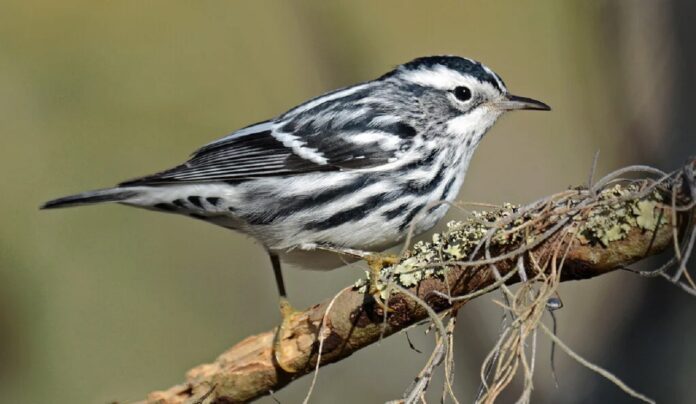Species require limited environmental niches for life and reproduction, which are disrupted by fast climate change. Yale ecologist Jeremy Cohen experiences all four seasons from his office in New Haven, from hot and muggy summers to dry and frigid winters. But he realized that many of his study subjects, North American birds, ignore the seasons and look for the same weather throughout their migratory routes all year.
A new study was done by Yale ecologists Jeremy Cohen and Walter Jetz to determine how North American birds track their preferred climatic conditions or the environmental niche and which factors, like nutrition, body size, or behavior, can predict these various methods across species.
Researchers from Yale University discovered diverse niche tracking strategies across the more than 600 species in the study, defined by tracking both averages and variability in the local environment and significantly associated with ecological traits of those species, such as body size or diet.
Jeremy Cohen, an associate research scientist in Jetz’s lab, said, “We found that some migratory species can track temperature or rainfall throughout the year, going out of their way to experience the same weather all year long, while others experience strong variation in seasonal conditions throughout the year.”
The study used satellite weather data to determine the environmental conditions for each record for millions of individual bird occurrence reports. This was the first study to look at weather variability’s role in influencing how bird species track their niches between seasons rather than merely averages.
This is vital information for determining bird sensitivity to climate change, changing the average and variability (or unpredictability) of meteorological conditions, leaving critical knowledge gaps about birds‘ ecology and possible vulnerability.
He said. “For the first time, we can determine which species require strict consistency in both the average and variability of weather conditions throughout the year; This is critical information when trying to determine vulnerability to climate change, which is shifting both the average and variability (or unpredictability) of weather conditions.”
Long-distance migrants, like the prothonotary warbler, are excellent niche trackers because they can look for ideal conditions year-round, thanks to their migratory prowess. While large-bodied birds and herbivorous or omnivorous species, including many woodpeckers, are able to survive a wide range of conditions over the course of the year, small-bodied birds and insect-eaters, like vireos also tend to monitor their niches throughout the course of the year closely.
Researchers can predict climate change susceptibility by determining who has specific needs and who can handle a wider variety of circumstances. More flexible species may be better equipped to adapt to climate change than rigid niche trackers. He found that the distribution of various niche tracking strategies is not random.
It was challenging to reveal these patterns. Cohen and Jetz had to combine information from 22 years of weather data from the NASA MODIS instrument and the CHELSA climate data set, as well as millions of occurrence records for more than 600 bird species, for the study. These inquiries about seasonal niche monitoring and climate change sensitivity in other taxa may soon be possible because of the recent surge of tracking data for many of these additional species.
The new research suggests that niche tracking could be a crucial tool for some species to use seasonal movement as a buffer against changing environmental conditions. While much research on the relationship between species and climate change characterizes the world’s species as “victims to the whims of the climate,” the new findings suggest that this is not necessarily the case. However, in recent decades, anthropogenic climate change has increased at a rate and scale that have never been seen, placing many species in situations they have never encountered.
To prevent the extinction of ecological communities and biodiversity while preserving ecosystem services, it is crucial to comprehend how wildlife may cope with the continued effects of rapid climate change.
The conclusion shows that Diversity in niche-tracking strategies indicates varying sensitivity to climate change, with narrow trackers vulnerable.
Journal Reference:
- Jeremy Cohen,Walter Jetz, etal. Diverse strategies for tracking seasonal environmental niches at the hemispheric scale. Global Ecology and Biogeography. DOI: 10.1111/geb.13722
